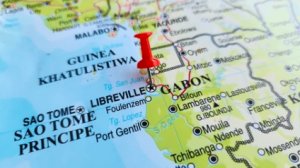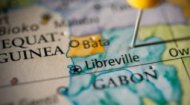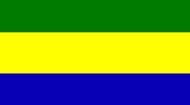|
|
Beyond oil, the timber industry, historically a crucial export, continues to play a role, with processing facilities located in and around the capital. The service sector has also expanded significantly, encompassing banking, finance, telecommunications, and a growing tourism industry. Libreville boasts modern infrastructure, including the Léon Mba International Airport, which serves as a vital gateway for business and leisure travelers, and well-developed road networks connecting it to other parts of the country. Despite its oil-fueled prosperity, Libreville faces the challenge of diversifying its economy to reduce reliance on natural resources and create more sustainable employment opportunities. Efforts are underway to promote sectors like agriculture, fisheries, and ecotourism. The city's high cost of living, one of the highest in Africa, is a direct reflection of its economic importance and limited local production, making it a place where luxury goods and services are readily available but everyday necessities can be expensive. Libreville's social profile is a vibrant mosaic of cultures and traditions. As the capital, it attracts people from all of Gabon's diverse ethnic groups, including the Fang, Myene, Punu, Nzebi, and others, each contributing to the city's unique character. While French remains the official language and lingua franca for business and education, a multitude of local languages are spoken in homes and communities across the city. This linguistic diversity reflects the rich cultural tapestry of the nation. |
Libreville Profile |
Libreville Profile |
Libreville Profile | Libreville Profile |
 |

|
The city's cultural scene is dynamic, though perhaps less overtly commercialized than in some other African capitals. Music forms an integral part of Libreville's identity, with local genres like ndem and bongo resonating alongside international sounds. The city has produced renowned musicians and artists, and its nightlife often features live music venues. Artistic expression is also visible in traditional crafts, sculptures, and paintings, often displayed in local markets and galleries. Education and healthcare facilities in Libreville are among the best in Gabon, though access and quality can vary. The Omar Bongo University is the country's premier institution of higher learning, attracting students from across the region. Like many rapidly urbanizing cities, Libreville grapples with social issues such as income inequality, informal settlements, and the need for improved public services for all its residents. However, a strong sense of community and family ties often provides a resilient social safety net. A typical day in Libreville begins early, with the city slowly waking to the sounds of traffic and the stirring of its residents. Commuting to work is a significant part of daily life, with a mix of private cars, shared taxis (known as "clandos" or "taxis-brousse"), and public buses navigating the city's main arteries. The morning rush hour can be bustling, particularly along the routes leading into the central business district and governmental areas. Breakfast often consists of simple fare like bread, coffee, or local pastries. Lunch, a major meal, might be taken at a local eatery, a "maquis" (informal outdoor restaurant), or at home. Gabonese cuisine features a rich array of flavors, with staples like plantains, cassava, and yam accompanying grilled fish, chicken, or meat, often served with a spicy sauce. Seafood, given Libreville's coastal location, is particularly fresh and abundant. Afternoons are dedicated to work, business, or the rhythms of home. Shopping centers and bustling markets like Mont Bouët, one of the largest in Central Africa, are central to everyday commerce. Here, everything from fresh produce and seafood to textiles, electronics, and traditional remedies can be found, offering a sensory explosion of sights, sounds, and smells. Evenings often involve socializing with family and friends, whether at home, a restaurant, or one of the city's many bars and nightclubs. Despite challenges, the spirit of Libreville residents is characterized by resilience, warmth, and a strong sense of Gabonese identity. For visitors, Libreville offers a mix of cultural insights, historical landmarks, and natural beauty. While not yet a mass tourism destination, its tourist attractions provide a compelling experience for those seeking an authentic glimpse into Central African life. Perhaps the most iconic landmark is the majestic Palais Presidentiel (built by President Bongo in the 1970s), a magnificent architectural marvel that sits imposingly overlooking the ocean, though access is restricted. Closer to the city's heart, the National Museum of Arts and Traditions ((Musee des Arts et Traditions du Gabon) is a must-visit. It houses a fascinating collection of traditional Gabonese masks, sculptures, and artifacts, offering deep insights into the country's diverse ethnic groups and their artistic heritage. The striking St. Michael's Church (Nzeng-Ayong) is another architectural gem, renowned for its 31 carved wooden pillars depicting biblical scenes by Gabonese artist Zeze. Its unique blend of traditional wood carving and religious iconography makes it a truly memorable site and is best known for its 31 feet tall, wooden carved columns which are said to have been carved by a blind man. For a touch of nature within the city, the Arboretum de Sibang provides a serene escape, showcasing a variety of local flora. The Corniche, Libreville's waterfront promenade with its wide grass path along the bay featuring many unique sculptures, is perfect for an evening stroll, offering picturesque views of the Atlantic and a glimpse into local leisure activities. For those seeking pristine beaches, a short boat ride across the estuary leads to Point Denis. This popular destination boasts beautiful white sand beaches, resorts, and the chance to spot marine life while snorkeling or simply relax by the sea. Local markets like Mont Bouët, while central to daily life, also serve as vibrant tourist attractions, offering an immersive cultural experience and opportunities to purchase local crafts and souvenirs. There are also city tours by bus although these are VERY expensive. Find out more about Libreville in the video. |







